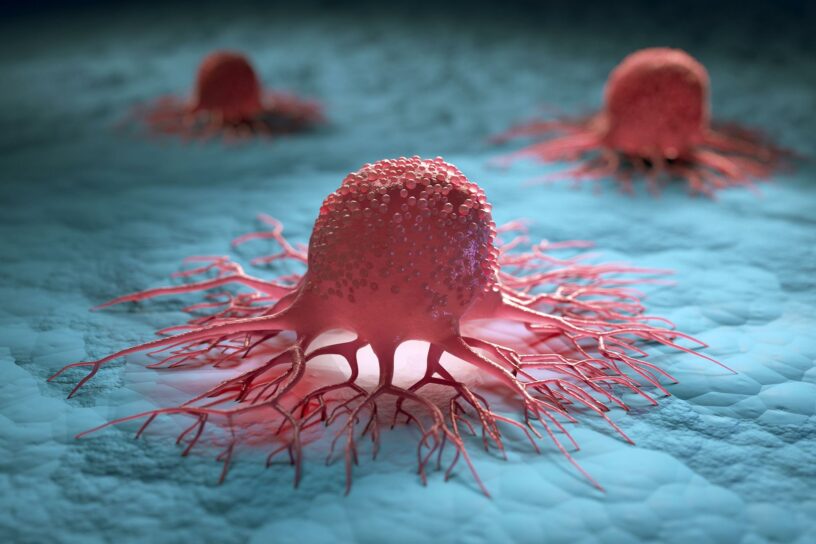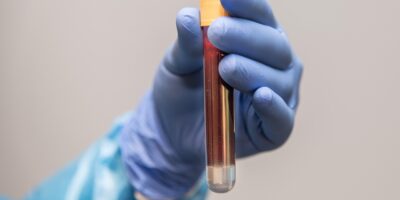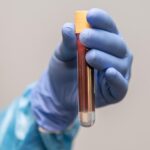Cancer immunotherapy – specifically activating macrophages – has aroused intensive attention in recent years but faces 2 major challenges. Firstly, M2 macrophages can promote cancer by promoting uncontrolled tissue repair and cell multiplication. Secondly, the macrophage engulfment of cancer cells is severely inhibited by ‘don’t eat me signals’. Despite impressive advances, an individual agent that can simultaneously facilitate macrophage phagocytosis and reprogram macrophages from M2 to M1 phenotype has rarely been reported. In this study, these researchers for the first time identified that resiquimod (R848) can significantly promote macrophage-mediated engulfment of tumor cells in addition to its repolarization effect.
These researchers have discovered that resiquimod (R848), a small molecule toll-like receptor agonist, could promote phagocytosis of macrophages while reprogramming M2 macrophages (tumoral) to M1 macrophages (anti-tumoral). This pro-phagocytic effect could be enhanced via combination with an anti-SIRPα antibody (aSIRPα).
Cancer cells overexpress CD47 on their surface which interacts with regulatory protein SIRPα, expressed on macrophages and this suppresses phagocytosis. Previous studies have demonstrated that blocking this CD47- SIRPα axis is promising to improve cancer immunotherapy. Thus, there is a need to reinforce the effect of the CD47- SIRPα blockade. Another mechanism that curbs the efficacy of the CD47- SIRPα blockade therapy is the immunosuppressive tumor-micro environment (TME) due to the high abundance of tumour-associated macrophages (TAMs) mainly of M2 phenotype. These TAMs can also weaken T-cell immunity activation.
Combining the modulation of phagocytosis and repolarization of macrophages is expected to show better therapeutic effects. Studies have demonstrated that the combination of CD47- SIRPα blockade and M2-to-M1 repolarization resulted in more robust anti-tumor efficacy.
These researchers identified that resiquimod (R848) can significantly promote macrophage-mediated engulfment of tumor cells in addition to its repolarization effect. Credit was given to Sengupta et al who developed the anti- SIRPα antibody (aSIRPα) modified lipid nanoparticle which improved antitumor efficacies in aggressive melanoma and breast cancer models.
Delivery of R848 and a SIRPα was challenging due to their striking different properties. They resorted to constructing a disulfide-bridged mesoporous silica nanoparticle (MSN)- based delivery system called (RMSN-aSIRPα) for the co-delivery of R848 and aSIRPα to enhance macrophage-mediated cancer immunotherapy. This biotechnology tool is attractive to delivering strikingly different cargos simultaneously.
RMSN-aSIRPα was prepared by loading R848 into the cavity and adsorbing aSIRPα on the surface of MSNs. aSIRPα interacts with SIRPα on macrophages to block the CD47–SIRPα axis and synergized with R848 to promote macrophage phagocytosis. Meanwhile, R848 stimulated the M2-to-M1 repolarization of TAMs in the tumor microenvironment (TME).
In aggressive melanoma and breast cancer animal models, RMSN-aSIRPα significantly improved the anti-tumor efficacy by reducing the abundance of M2 macrophages and facilitating increased infiltration of CD8+ T cells in tumor tissues. These findings demonstrate that the nanoparticle-enabled combination of macrophage repolarization by R848 and CD47-SIRPα blockade can amplify the macrophage-based immune response.
To measure the levels of M2 and M1-associated genes, qRT-PCR (quantitative real-time polymerase chain reaction) was used. Flow cytometry was also used to detect, count and sort the cells and present them in flow cytometry images which were percentage-based.
Further analysis by flow cytometry demonstrated that RMSN- aSIRPα treatment unregulated the ratio of CD80 or CD86 (T – cells) by 12.5%, in tumor sites which is consistent with their hypothesis that R848 can promote the activation of antigen-presenting cells.
Results indicated that aSIRPα alone or R848 alone did not significantly improve the phagocytosis of macrophages. In contrast, the combination of aSIRPα and R848 increased the phagocytosis of macrophages.
These researchers have established for the first time that R848 is an agonist that allowed macrophages to phagocytose tumor cells, and that R848 and SIRPα together may enhance this action even more. They created a RMSN- SIRPα nanoparticle-enabled codelivery system that can simultaneously facilitate both macrophage engulfment of tumor cells and their repolarization from an immunosuppressive M2 phenotype to an immunostimulatory M1 phenotype. In both melanoma and breast cancer tumor models, this has led to strong antitumor effects. Additionally, RMSN- SIRPα promoted CD8+ T-cell infiltration into tumor tissues, inducing potent innate and adaptive anticancer response. These discoveries provide an effective way to enhance macrophage-based cancer immunotherapy.
Source reference:
Zhang, J.-Y., Chen, F.-M., Liu, R., Luo, J.-Q., Huang, Y.-C., Shu, N., Zheng, S.-J., Shao, D., Leong, K. W., & Du, J.-Z. (2022). Nanoparticle-enabled concurrent modulation of phagocytosis and repolarization of macrophages for enhanced cancer immunotherapy. Nano Today, 47, 101651. https://doi.org/10.1016/j.nantod.2022.101651
Image reference:
UK, C. R. (2022, November 2). Completely changing current ways of thinking – new breakthrough could lead to better cancer treatments. SciTechDaily. Retrieved November 6, 2022, from https://scitechdaily.com/completely-changing-current-ways-of-thinking-new-breakthrough-could-lead-to-better-cancer-treatments/









Leave a Reply
You must be logged in to post a comment.